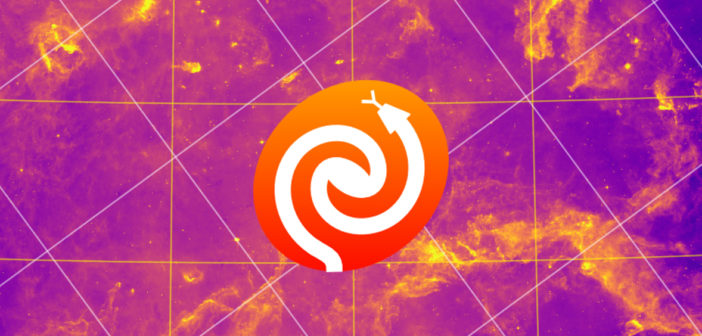One of the greatest misconceptions about astronomy as a profession is that we all sit alone in front of a telescope eyepiece every night, gazing at the stars. In reality, today’s observational astronomy is collaborative — and it takes the form of ones and zeros on a computer.

Two different RGB images of the region newar the Hickson 88 group, both produced with Astropy from Sloan Digital Sky Survey data. The top image uses default plot parameters; the bottom has parameters set to show a greater dynamical range. [The Astropy Collaboration et al. 2018]
A Computer-Driven World
Before the days of photography, the field of astronomy did rely on lone professionals who observed the heavens through their telescopes; after that, astronomers exposed film plates to gather data. Today, astronomy is a largely computer-driven field: observations are made by telescopes that often aren’t in the same location as the astronomers, and the images the telescopes take are stored as files full of data.
Modern observational astronomers need the coding skills to process these data and turn them into images and tables. They need to use computers to fit models to the data to better understand what they’re seeing. They need to present their results via complex plots and graphs — which are again produced using code.
As a result of this reality for astronomers, the handling of astronomical data has become in large part a community-driven, collaborative process; when good ideas are shared, each individual astronomer can spend less time reinventing the wheel. It’s in this spirit that the Astropy project was first developed. In a recent publication, the Astropy collaboration has now detailed the current status of this project.
Pooling Resources

Plot of the total number of commits (contributions consisting of changes or additions) to the Astropy core package over time. [The Astropy Collaboration et al. 2018]
The Astropy project was started in 2011. Since then, the package has been used in hundreds of projects, and its scope has grown considerably. Anyone is able to contribute to this body of code, and it continues to be actively developed — as of version 2.0, the Astropy package contained over 212,244 lines of code contributed by 232 unique contributors.
Status of Astropy
In their recent publication, the authors describe some of the features currently contained in the Astropy core package — like support for coordinate transformations, reading and writing astronomical files, manipulating quantities with units attached, and modeling and visualizing data.

Spitzer data providing another example of a figure made using an Astropy subpackage, which allows for the overlay of multiple coordinate systems and customization of which ticks and labels are shown on each axis. [Beerer et al. 2010]
Critical efforts like the Astropy project not only provide and develop software tools essential to modern academic research, but they also help lower the barrier to entry for the next generation of professional astronomy researchers. With such support in a collaborative community, we can only imagine what modern astronomy will look like a few generations in the future!
Citation
“The Astropy Project: Building an Open-Science Project and Status of the v2.0 Core Package,” The Astropy Collaboration et al 2018 AJ 156 123. doi:10.3847/1538-3881/aabc4f


2 Comments
Pingback: AAS Nova – New
Pingback: Exploring Our Star with SunPy